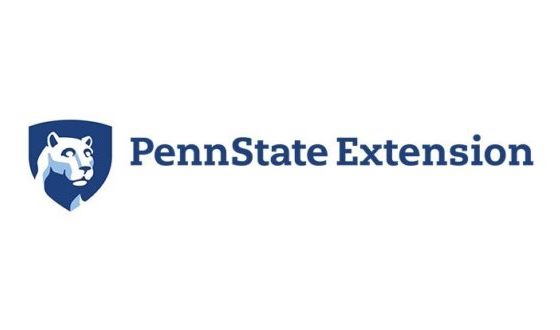15 Supply Chain Best Practices to Adopt in 2024

Supply chain management spans multiple business units, external vendors and internal supply chain team stakeholders. Effective supply chain management requires the right people, making the right decisions based on the right data and framework.
However, mitigating the risks and overcoming the numerous hurdles that appear in these complex supply networks is no small feat. There are five basic steps of supply chain management — planning, sourcing supplies and materials, manufacturing, delivery and returns — and each poses unique challenges and considerations.
There are also four attributes of a supply chain to keep in mind: integration, operations, purchasing and distribution. These broad categories form the foundation of a successful supply chain management strategy.
15 Best Practices for Supply Chain Management
There are many different ways companies can improve their supply chain management to increase operational efficiency, reduce costs and provide a better customer experience. Below are 15 supply chain management practices that businesses can follow in 2024 to start realizing these benefits.
1. Recruit & Develop Supply Chain Professionals
Emerging technology and an increasingly globalized supply chain are driving forces in the evolution of supply chain processes, but the skilled workers needed to run these operations are in short supply. In fact, only 38% of supply chain leaders(opens in a new tab) are confident in their current supply chain team’s abilities to compete in today’s market.
Overcoming this shortage of skilled workers and closing the skills gap requires effectively finding new talent with the required knowledge. To achieve this, many supply chain leaders are hiring staffing companies that specialize in supply chain recruitment. Building relationships with universities to establish a pipeline of students in supply chain, logistics and project management programs for internships, entry-level positions and professional development is another effective avenue for sourcing talent with the necessary skills.
It’s also essential to provide career development opportunities for supply chain staff. That means first investing in high-quality training to bolster current employees’ skillsets. Building clear roadmaps for promotions and focussing on cross-functional job mobility also helps companies retain their talent and develop a well-rounded team that understands every level of supply chain operations.
2. Align the Supply Chain Team
Effective cross-business execution is integral to establishing an efficient supply chain. However, too often, each function of the supply chain operates like a distinct entity, separated by business units, varying priorities, disparities in time and resources, siloed systems and procedures and even geography. That often leads to information gaps, slow communication, errors and inconsistent processes.
So how can supply chains be more efficient with such disjointed teams? Creating a specific role that coordinates activities and communication between the related business units can help by facilitating collaboration and orchestrating tasks. This person would develop standardized supply chain processes and ensure that team leaders across the organization are on board by heading detailed discussions about the strengths and weaknesses of current and proposed processes, as well as the impact any changes have on each area of the value chain.
Once that’s complete, each supply chain group can put the standardized processes into practice and make adjustments as necessary. Above all, from senior-level decision makers to warehouse staff, everyone should have a voice in the supply chain operations to ensure goals and practices are aligned and encourage innovation.
3. Establish Alliances with Suppliers
Building strong partnerships with suppliers is vital to supply chain success, often saving expenses and improving reliability. If both sides treat this as a partnership, these relationships should be equally beneficial. That requires balanced problem resolution and co-creating goals that help both parties achieve their objectives.
Companies should also look for suppliers that share the same values and principles beyond the basics, such as expertise, pricing and timeliness in vetting supply partners. Things like environmental sustainability and social responsibility are essential points of agreement, as scandals like labor law violations can have a damaging impact on the companies they serve.
4. Purchase Supplies in Volume to Reduce Costs
Taking advantage of economies of scale can be a cost-effective way to purchase inventory. Understanding demand from all areas of the business and making a single purchase lowers supply chain costs via volume discounts and reduced administrative and warehousing labor costs compared to multiple supply purchases.
While businesses can make one-time bulk purchases, there are two other ways to set up volume purchases:
- Blanket orders establish a set price and quantity for products delivered as needed over a certain amount of time, often one year. That protects the buyer from price increases and can assist with inventory stability as you can request additional products when stock gets low.
- Standing orders provide similar price protection as blanket orders, but supply deliveries occur in predetermined quantities on predetermined dates over a certain period of time. These provide less flexibility than blanket orders, but eliminate guesswork and short-term forecasting.
5. Diversify Supplier Relationships to Avoid Delays
Supplier-side delays are one of the most common reasons for supply chain disruptions. A lack of availability of raw materials, import/export issues, weather and natural disasters, political and regulatory issues and other unforeseen obstacles can all slow down or even cease the delivery of supplies.
While it’s hard to predict delays, businesses can still account for and mitigate these problems. Communication is the primary defense. One of the main benefits of having strong alliances with suppliers is the ability to forge open and responsive communication that allows both parties to reach out as soon as possible once a potential delay is on their radar.
Anticipating when a situation may affect a supplier is a key to avoiding delays before they become a more substantial problem. For example, the possibility of placing tariffs on goods from a supplier’s country should encourage companies to source alternative suppliers or make bulk purchases before the new laws go into effect.
Ultimately, the best way for businesses to overcome supplier delays is to invest in supply chain software with predictive analytics that can show exactly how much inventory is in stock, how fast it’s moving and how much you need in the future. In addition, diversifying your suppliers can help you when you predict a delay by giving you something to actually do about it.
6. Improve Demand Forecasting
Having too much or not enough product in stock is a costly issue for companies. The former may mean that inventory isn’t moving because sales are down or the business miscalculated demand and overbought. The second may mean that sales are up, but supply is lagging, leading companies to miss out on revenue opportunities. Both are consequences of inaccurate demand forecasting.
Forecasting errors have an enormous effect on the bottom line. Research shows that a 15% improvement in forecast accuracy results in at least a 3% gain in pre-tax revenue(opens in a new tab). Accurate demand forecasting enables businesses to have the correct quantities to meet both current and future needs and takes into account historical sales, sales forecasts, seasonality and promotions.
7. Optimize Inventory Management
In tandem with demand forecasting, inventory management is another crucial part of an efficient supply chain. Once a business can reliably predict demand, supply chain managers need to calculate optimal inventory levels for current and future demand and develop replenishment best practices (e.g., ad-hoc supply restocking or one-time, standing or blanket bulk purchases). Having visibility into inventory helps you forecast more accurately — without inventory visibility, you can’t have accurate demand planning.
Another important aspect of inventory management is ensuring that it aligns with supply chain objectives. That means determining where to make adjustments in your operations, such as fixing inventory-demand mismatches, lowering total cost of ownership, accelerating the order-to-pay cycle, shortening delivery times or improving document management.
Software that tracks inventory in real time, monitors the item’s velocity and automatically reorders stock per item- and demand-specific criteria provide valuable insights into the strengths and weaknesses of a company’s inventory management strategy and enable data-supported planning and decision-making.
8. Track Supply Chain Metrics
Supply chain managers need to establish specific parameters by which they can quantify supply chain performance. These key performance indicators (KPIs) allow businesses to identify and analyze strengths and inefficiencies to enable data-supported goals. Among the most critical metrics are:
- Perfect Order Rate: This measures a supply chain’s ability to deliver error-free orders. That means orders that arrive on time, in full, containing the correct items. A perfect order rate has one of the biggest impacts on the bottom line, as it directly affects customer satisfaction and retention.
- Warehousing Costs: This metric is critical for establishing a financially efficient supply chain. It encompasses all of the costs related to warehouse operations, including labor, rent and utilities, equipment, shelving and pallet racks and technology. Supply chain managers should review this KPI regularly and make adjustments as necessary. However, businesses should analyze any cost-cutting on warehousing expenses to understand its impact on other areas of the supply chain.
- Inventory-to-Sales Ratio: This KPI measures the amount of inventory available for sale compared to how much is sold and helps businesses avoid over- or under-stocking items. It’s calculated by dividing the amount of available inventory by the amount sold and then multiplying that result by 100 for a percentage.
- Inventory Velocity: This looks at the amount of inventory projected to sell within a given time frame, often a quarter or year. It is calculated by dividing the inventory count at the beginning of the period by the sales forecast. This metric helps supply chain managers optimize inventory levels by showing them how quickly items need to be restocked.
- Supply Chain Cycle Time: This metric calculates the overall efficiency of the supply chain. Shorter cycles are more efficient, leading to competitive advantages. Longer cycles can indicate bottlenecks or other pain points that need to be addressed. Finding the supply chain cycle time requires supply managers to measure how long each step of the supply chain takes, from sourcing suppliers and order placement to customer delivery and final payment. It assumes inventory levels of zero and is calculated by adding the time each stage of the supply chain takes together. It’s most helpful to use the longest lead time for each stage, as that provides more wiggle room for delays.
9. Increased Supply Chain Visibility
Constant communication, timely updates and reliable documentation are crucial to an efficient supply chain. Businesses need true end-to-end supply chain visibility and must account for every aspect, including suppliers, partners, warehouses and shipping carriers. Real-time data sharing across the supply chain provides a bird’s-eye view of the entire chain and more granular information about each node. The benefits of this visibility even reach the customer in the form of real-time tracking of deliveries.
10. Centralize Document Management
Managing purchase orders, customs paperwork, inspection reports, bills of lading and other supply chain documentation can be a complicated process. Since supply chain documentation involves multiple business units, it often suffers from inconsistencies, disconnects and misalignment of processes and goals due to siloed functions and departments. That creates confusion and can reduce responsiveness while increasing errors.
Investing in a solution that provides a centralized hub for all supply chain documentation and serves as a comprehensive source for decision-makers to review and manage all of a company’s supply chain activities can provide greater clarity over end-to-end processes while eliminating ad-hoc, disparate document management.
11. Improve Order-to-Pay Process
The order-to-pay process, also known as the procure-to-pay process, encompasses all of the steps involved in an order, from requisition to final payment. This process usually includes various departments across the company, including finance, sales, warehousing and logistics, all of which are likely using different systems to fulfill their requirements. If operations are fragmented, this can cause many challenges, namely data discrepancies, lack of responsiveness and misalignment of activities.
Addressing these challenges might involve companies automating the order-to-pay processes with a unified platform that can simplify the entire process by addressing each step. Everything from vendor management and the issuance of purchase orders to delivery and final payment recording can be centralized and automated, improving visibility across the entire cycle, driving key insights and boosting efficiency.
12. Invest in Environmental and Social Sustainability
While compliance with various laws and regulations is a chief driver of supply chain sustainability initiatives, being a leader in this realm can also bolster a company’s brand value and reputation and its bottom line. A survey found that that 43% of consumers(opens in a new tab) expect businesses to hold themselves accountable for their environmental impact and that products marketed as sustainable grow 5.6 times faster(opens in a new tab) than those that are not. These stats point to an increasingly environmentally conscious customer base that is becoming more focused on the sustainability of the businesses they buy from.
The goal here is to actively minimize the environmental, social and economic effects of the supply chain. That means finding innovative solutions to evolving environmental and social issues and meeting and exceeding expanding environmental regulations. It also means making conscious decisions regarding the supply chain’s social and environmental impacts, such as only partnering with suppliers that uphold high standards for labor conditions or purchasing inventory and materials from environmentally-friendly sources.
13. Practice Risk Mitigation & Compliance
Supply chains are inherently full of risks. Natural disasters, raw material shortages, port disruptions, trade disputes, theft, cybersecurity breaches, non-compliance with laws and regulations and reputational damage all represent potential supply chain disruptions. Known risks such as distribution limitations, demand fluctuations, supplier issues and regulatory non-compliance can be identified, measured and managed, and it’s often possible to quantify their impact on the supply chain.
Unknown risks, on the other hand, are both difficult to predict and difficult to control. They include natural disasters and geopolitical events and are challenging to quantify or incorporate into the supply chain management framework.
Diversifying solutions is the best way to mitigate both types of risks. That means having alternative suppliers, partners, facilities and production processes.
However, having backups isn’t always feasible, especially for proprietary items. In these cases, companies that can proactively predict, assess and plan for disruptions can ensure they have alternative supply chain functions. Advanced predictive analytics are powerful tools in predicting and mitigating known and unknown risks, leading to more actionable strategies. In the same vein, managing supply chain compliance risks requires access to the latest information regarding legal and regulatory changes, automatic documentation and operational integration.
14. Focus on Total Cost of Ownership (TCO)
The total cost of ownership (TCO) encompasses all of the costs associated with every aspect of the supply chain. It’s how businesses account for each activity’s costs within the supply chain, including material acquisition, storage, selling, transportation, currency exchange costs, trade incentives and restrictions.
The key to making adjustments in this area is to use the TCO to make informed decisions with all of the supply chain nodes and other business units that take a part in strategic decisions. That’s because there are usually unforeseen consequences to cutting costs to simply achieve a lower TCO. If, for example, a delivery partner can provide a low purchase price for bulk orders, but there’s not enough storage space in the warehouse, then the cost may increase due to the additional staff and space needed to organize and house the items (including potentially paying a third party to hold the inventory).
15. Invest in Technology & Software
Most businesses employ multiple systems to manage their supply chain operations. These often include basic programs such as Excel spreadsheets and applications that are then integrated with the enterprise resource planning (ERP) system. As described in the sections above, the issue is different parts of the supply chain often use different systems and manual processes to perform supply chain tasks. That can be a costly mistake in the current fast-moving business environment.
A successful, efficient supply chain relies on access to real-time information and supply chain analytics to ensure data-driven strategies and enable swift action when necessary. Automation, predictive analytics and digitized documentation are already making supply chains more efficient and cost-effective. However, the most powerful tool in supply chain optimization is a comprehensive supply chain management solution that can handle all aspects of the business, from all operational functions, to sales and marketing, to finance.
Source : netsuite.com



